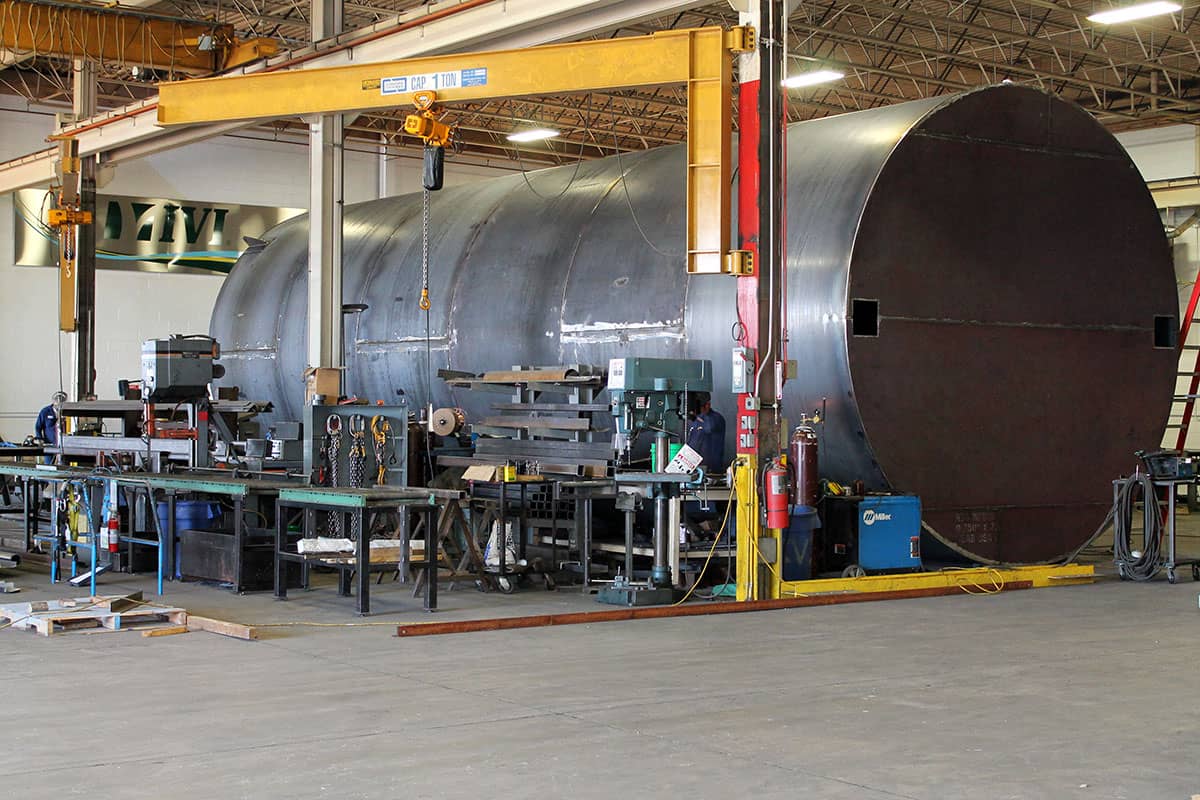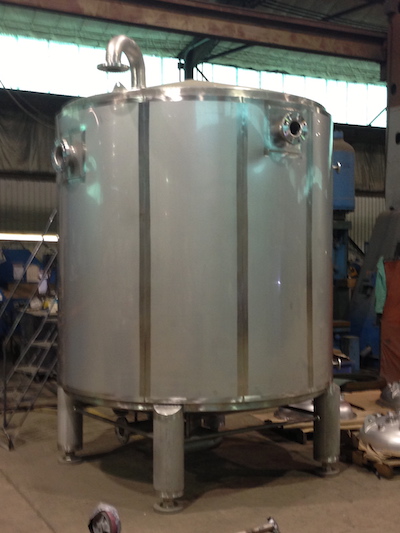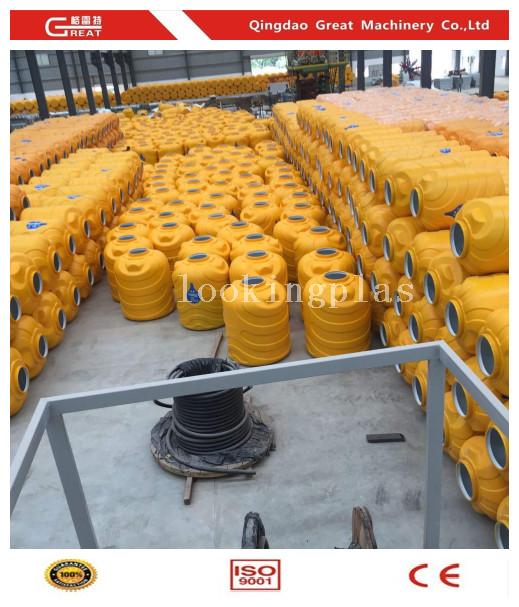The Future of Storage Tank Manufacturing: Fads and Technologies to Enjoy
The storage tank manufacturing industry gets on the cusp of a crucial advancement, driven by emerging fads in clever materials, automation, and sustainability. As sectors progressively prioritize environmental duty, innovations such as environmentally friendly composites and IoT-driven surveillance systems are reshaping functional paradigms. Furthermore, the growing demand for modification and modular designs recommends a shift in the direction of more versatile production techniques. Comprehending these trends not only highlights the challenges in advance but likewise reveals possibilities that could redefine the landscape of storage tank production in the coming years. What implications might these improvements hold for industry stakeholders?
Developments in Smart Products
Over the last few years, the storage tank manufacturing market has actually seen a substantial uptick in the adoption of wise products, transforming style and performance. Smart products, which can respond dynamically to environmental adjustments, have allowed manufacturers to produce containers that are not just much more sturdy yet additionally more reliable in their operational abilities.
One remarkable advancement is the assimilation of shape memory alloys and polymers that can adapt to varying stress and temperatures. This versatility enhances the architectural honesty of storage tanks, decreasing the risk of leaks and failings (Texas Oil & Gas Storage Tank Fabrication Authority). In addition, these products often exhibit self-healing homes, which further lengthens the life expectancy of tank, reducing maintenance costs and boosting security
The unification of sensing units within smart products enables for real-time monitoring of container conditions, supplying vital information that assists in anticipating maintenance and threat management. This data-driven technique not only improves functional effectiveness yet likewise aligns with ecological sustainability objectives by maximizing source use and stopping spills.
Increase of Automation Technologies
The increase of automation innovations is changing storage tank production by integrating robotics into production processes, enhancing efficiency and precision. Furthermore, the implementation of smart sensors allows real-time monitoring, ensuring quality assurance and safety criteria are met. AI-driven procedure optimization further improves operations, decreasing costs and boosting general performance in the sector.
Robotics Integration in Manufacturing
Robotics assimilation is revolutionizing the production landscape, especially in the storage tank industry. As manufacturers endeavor for enhanced efficiency and precision, robotics innovations are coming to be vital devices for simplifying production procedures. Automated systems are capable of performing repetitive tasks with higher speed and precision than human labor, decreasing the likelihood of errors and enhancing overall product top quality.
Among the crucial benefits of robotic combination is the ability to maximize process. Automated robotic arms can manage hefty materials, weld parts, and perform examinations, which minimizes physical strain on employees and reduces downtime. This shift not just improves security but likewise enables human staff members to concentrate on even more complicated and value-added tasks.
Additionally, robotics can promote flexible production, allowing firms to adapt swiftly to altering market demands - Storage Tank Manufacturing. Advanced programming permits robotics to quickly switch over in between various tasks and items, which is particularly valuable in a market where modification is progressively preferred
As robotics technology remains to progress, manufacturers can anticipate boosted capabilities, consisting of improved equipment finding out algorithms and boosted fact applications, better driving efficiency in storage tank manufacturing and setting new standards for the market.
Smart Sensors Implementation

Furthermore, the data gathered from these sensing units can be leveraged to optimize the supply chain, guaranteeing that products are offered when required while decreasing waste. This degree of understanding permits manufacturers to respond promptly to altering problems and client demands, improving general performance.
Furthermore, smart sensors add to enhanced regulatory conformity by constantly making sure and keeping an eye on environmental variables adherence to security criteria. As the industry progresses in the direction of more lasting practices, the capability to keep an eye on discharges and resource intake in real-time is important.
AI-Driven Process Optimization
Manufacturers in the storage tank sector are increasingly harnessing the power of AI-driven process optimization to improve operational efficiency and decision-making capabilities. By incorporating innovative formulas and equipment discovering strategies, firms can analyze substantial quantities of information generated throughout the manufacturing procedure. This data-driven method allows real-time tracking of production metrics, resulting in even more timely interventions and informed decisions.
AI technologies facilitate predictive maintenance, allowing manufacturers to prepare for equipment failings prior to they take place, thereby reducing downtime and maintenance prices. Additionally, these systems can optimize resource allowance by evaluating production patterns and readjusting operations, guaranteeing that materials and labor are made use of successfully.
Additionally, AI-driven optimization enhances top quality control by recognizing possible flaws during the production process. Automated examinations powered by AI can quickly spot incongruities, making certain that only products fulfilling stringent quality requirements progress via the assembly line.
As the storage tank market remains to welcome automation, AI-driven procedure optimization attracts attention as a transformative pressure, driving advancement and competitiveness. By leveraging these innovations, manufacturers can not only simplify operations yet likewise adapt promptly to market needs, positioning themselves for sustainable growth in a significantly complex manufacturing landscape.
Emphasis on Sustainability Practices
As the storage tank manufacturing industry develops, a considerable focus is put on sustainability practices. This includes the adoption of environment-friendly products, the application of energy-efficient production processes, and the assimilation of round economy concepts. By focusing on these efforts, manufacturers not just reduce their environmental influence however also enhance the durability and efficiency of their products.
Environment-friendly Products Adoption
Increasingly, the storage tank production industry is accepting green products as an essential aspect of sustainability practices. This change is driven by increased ecological awareness and regulatory pressures, prompting manufacturers to look for alternatives that lessen ecological impact.
Biodegradable compounds and recycled metals are gaining grip, using both performance and lower carbon impacts. For example, utilizing high-recycled-content steel not only minimizes the need for virgin products but additionally improves the overall sustainability of the item lifecycle. Additionally, manufacturers are exploring bio-based resins that offer durability while being less unsafe to the atmosphere.
The fostering of environment-friendly coverings and surfaces, which are totally free from volatile natural substances (VOCs), reflects the market's commitment to reducing air contamination and advertising much healthier working problems. These advancements not only line up with worldwide sustainability objectives but also meet the expanding market demand for greener items.
The combination of eco-friendly materials in storage tank production is not just a fad; it stands for a proactive method in the direction of responsible production that focuses on both ecological stewardship and economic feasibility, setting a new criterion for future growths in the market.
Energy-efficient Manufacturing Processes
There is an expanding acknowledgment within the storage tank manufacturing sector of the value of energy-efficient processes as an essential component of sustainable methods. As the market faces raising stress to reduce its carbon impact, manufacturers are executing cutting-edge innovations and methodologies focused on lessening energy usage throughout the manufacturing cycle.
One significant trend is the fostering of innovative manufacturing strategies such as lean production and automation. These methods enhance operations, minimize waste, and enhance performance, while additionally decreasing energy use. In addition, the assimilation of eco-friendly power resources, such as solar and wind power, right into manufacturing centers is coming to be extra widespread, allowing companies to run sustainably and decrease dependence on nonrenewable fuel sources.
Moreover, energy-efficient equipment and tools are being prioritized in new investments, as manufacturers look for to optimize their power usage. Making use of power monitoring systems makes it possible for real-time monitoring and analysis, helping with constant improvement in power performance.
Round Economic Situation Assimilation
A notable shift towards round economic situation combination is transforming sustainability techniques within the storage tank manufacturing sector. This technique emphasizes the significance of resource performance, waste decrease, and the recycling of materials throughout the manufacturing lifecycle. By embracing circular principles, manufacturers are progressively concentrated on making storage tanks that prioritize durability, repairability, and recyclability.
As component of this change, business are exploring cutting-edge materials and production methods that decrease environmental influence. The consolidation of recycled steels and plastics not only lowers the demand for virgin sources but additionally lowers carbon exhausts related to extraction and handling. In addition, manufacturers are carrying out take-back schemes that promote the refurbishment and recycling of end-of-life storage tanks, therefore closing the loophole in the production cycle.
Partnership amongst stakeholders, including vendors and customers, is important for cultivating a circular economic climate (Oil & Gas Storage Tank Fabrication). This collaboration enables the sharing of finest techniques and motivates the growth of lasting supply chains. Ultimately, incorporating circular economy principles right into storage tank manufacturing not only enhances environmental stewardship however also placements business to fulfill advancing regulatory standards and customer expectations for sustainability
Improved Security Procedures
In today's manufacturing landscape, boosted safety and security protocols have actually become critical for storage tank manufacturers. The industry faces raising regulatory scrutiny and demands for higher safety and security criteria due to the possible risks connected with the storage of dangerous products. Consequently, manufacturers are adopting a multifaceted approach to improve security steps throughout the production procedure.
One considerable growth is the execution of innovative danger analysis devices that determine prospective hazards during the style and production phases. These tools assist in positive measures to minimize risks before they rise into important issues. Moreover, manufacturers are spending in employee training programs that emphasize security methods, guaranteeing that all workers are skilled in emergency treatments and tools handling.
Furthermore, there is a growing emphasis on using high-grade products and innovative styles that boost structural integrity and minimize the likelihood of failings or leaks. Normal maintenance checks and extensive screening procedures are additionally being integrated into the production lifecycle to ensure conformity with safety guidelines.
Integration of IoT Solutions

In addition, IoT gadgets facilitate anticipating maintenance, which minimizes downtime and expands the life expectancy of tank. By examining data accumulated from sensors, manufacturers can foresee prospective failures and do maintenance tasks prior to essential issues arise. This aggressive strategy not just saves prices however additionally guarantees compliance with security guidelines.
Additionally, IoT integration sustains far better inventory administration by providing precise, real-time information on stored products. Texas Oilfield Storage Tank Company. This capability helps manufacturers optimize their supply chains, making certain that essential sources are readily available when required, therefore improving total performance
The execution of IoT remedies allows boosted interaction in between storage tanks and centralized monitoring systems, improving operations. As the storage tank manufacturing sector remains to take on IoT modern technologies, we can anticipate considerable advancements in safety and security methods and functional effectiveness, ultimately leading to even more durable manufacturing techniques.
Personalization and Modular Design
Adaptability in style has come to be a cornerstone of modern storage tank production as modification and modular layout options gain grip. The progressing demands of industries such as oil and gas, chemicals, and water monitoring demand customized remedies that fit specific functional demands. Customization makes it possible for manufacturers to produce containers that satisfy unique specs concerning dimension, shape, product, and functionality, making certain peak efficiency and performance.
Modular style, on the various other hand, allows for the setting up of pre-fabricated components, leading to substantial time and cost financial savings. This technique facilitates fast release and scalability, making it possible for services to adjust their storage capabilities in action to fluctuating demand. Furthermore, modular systems can be conveniently increased or reconfigured, reducing downtime and improving functional adaptability.
The assimilation of advanced manufacturing innovations, such as 3D printing and computer-aided style (CAD), additional boosts customization possibilities. These developments make it possible for specific engineering and fast prototyping, permitting for quick modifications and versions during the layout procedure.

Regulatory Adjustments and Compliance
Regulative changes and conformity requirements regularly shape the landscape of storage tank manufacturing, engaging manufacturers to stay versatile and watchful. With raising environmental concerns and the promote sustainable techniques, regulative bodies are applying more stringent guidelines worrying emissions, materials, and safety standards. As an example, the united state Epa (EPA) and numerous state agencies are modifying guidelines that regulate the layout and installation of tank, particularly those used for harmful substances.
Manufacturers should not just adhere to existing guidelines yet also prepare for future modifications, demanding recurring financial investment in research study and development. This includes adopting ingenious products and modern technologies that enhance tank stability and ecological defense. Furthermore, compliance with regulations such as the Spill Prevention, Control, and Countermeasure (SPCC) guideline is important for manufacturers to prevent lawful liabilities and large penalties.
Additionally, the combination of digital innovations helps with compliance tracking and reporting, allowing manufacturers to maintain openness and performance. As laws proceed to progress, staying informed and proactive is important for storage tank manufacturers to guarantee conformity, secure public health and wellness, and safeguard the environment, inevitably forming an extra sustainable market.
Regularly Asked Questions

What Are the Many Common Products Made Use Of in Storage Tank Manufacturing?
The most typical materials made use of in storage tank production consist of carbon steel, stainless steel, and fiberglass. Each product uses distinct benefits, such as resilience, deterioration resistance, and versatility to numerous storage requirements and ecological conditions.
Exactly How Do Tank Impact Citizen Ecosystems During Setup?
Storage container installation can interfere with local environments by changing land usage, affecting water drainage patterns, and possibly presenting contaminants. Appropriate website assessments and ecological management methods are important to alleviate these impacts and secure biodiversity.
What Is the Average Life Expectancy of a Modern Storage Tank?
The typical life-span of a modern storage tank usually varies from 20 to thirty years. Variables such as material high quality, environmental problems, and maintenance methods significantly affect long life and overall performance throughout their operational life expectancy.
Just How Do Manufacturers Ensure High Quality Control in Production?
Manufacturers ensure quality assurance via rigorous screening procedures, adherence to sector criteria, and continual monitoring during production (Oil & Gas Storage Tank Fabrication). Advanced modern technologies such as automation and real-time information analysis additionally boost uniformity and dependability in storage tank manufacturing processes
What Are the Expenses Connected With Preserving Storage Space Storage Tanks?
Preserving tank entails numerous prices, consisting of routine assessments, repair services, governing conformity, deterioration avoidance, and possible ecological remediation. These costs can considerably impact general operational budget plans and require positive management to guarantee lasting efficiency and safety and security.
As manufacturers progressively accept automation modern technologies, the deployment of clever sensing units is becoming a pivotal aspect of modern manufacturing processes in the storage space tank sector. Manufacturers in the storage space tank sector are progressively using the power of AI-driven process optimization to enhance operational performance and decision-making capacities. Progressively, the storage space container manufacturing industry is accepting environmentally friendly products as a basic element of sustainability techniques. In today's manufacturing landscape, enhanced security procedures have come to about his be necessary for storage tank manufacturers. Governing modifications and conformity requirements regularly shape the landscape of storage tank production, compelling manufacturers to continue to be adaptable and watchful.